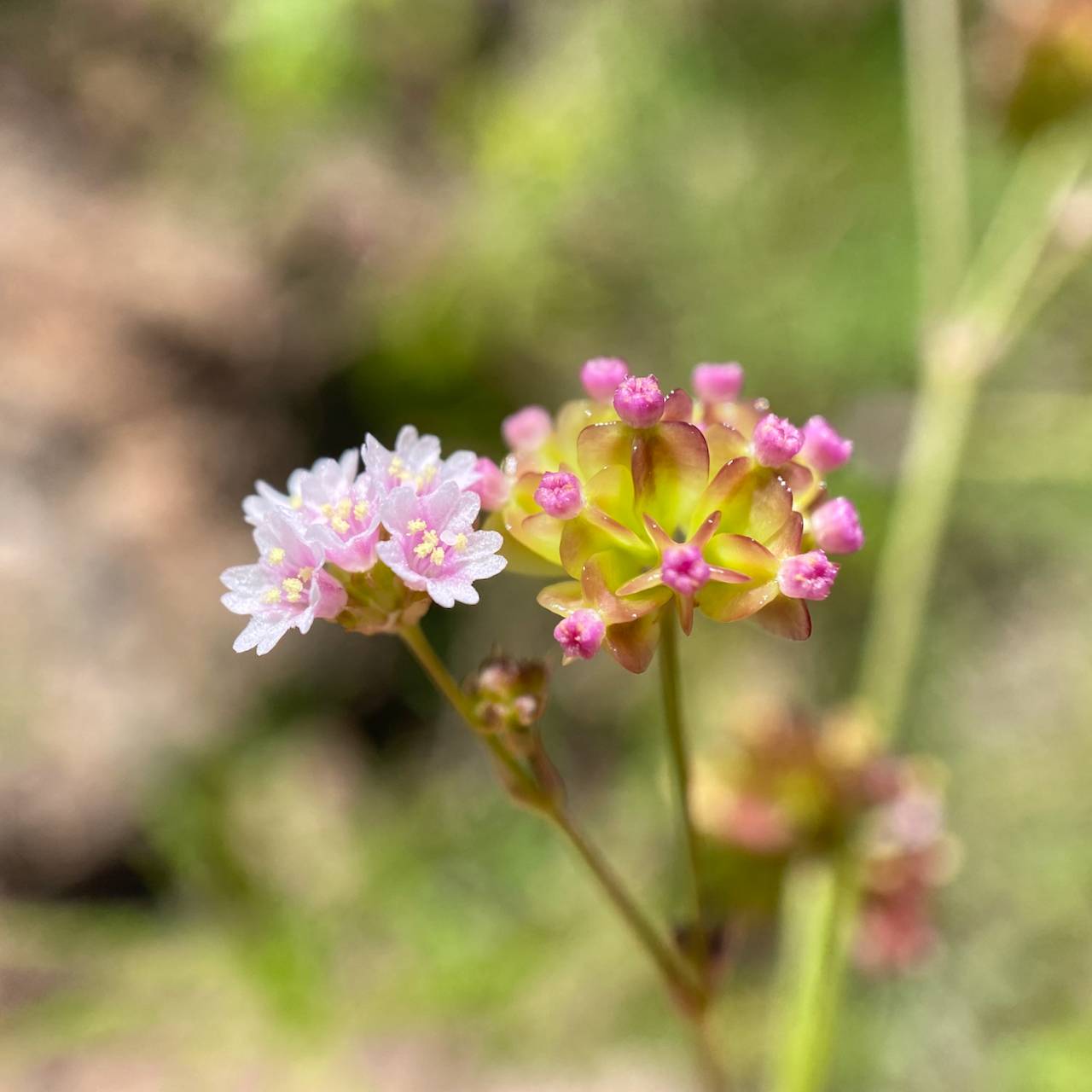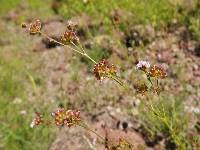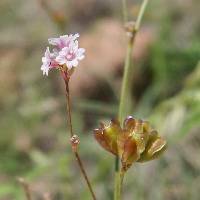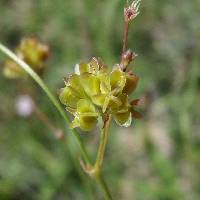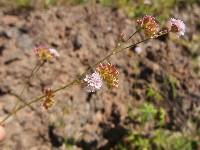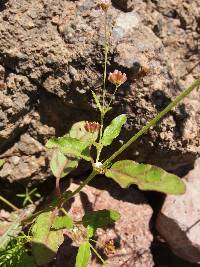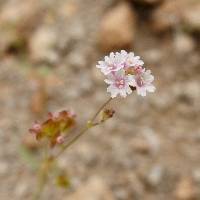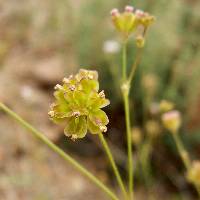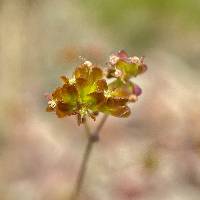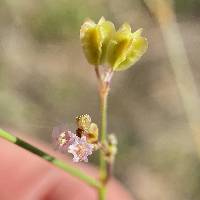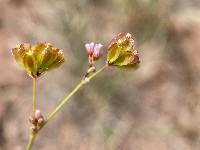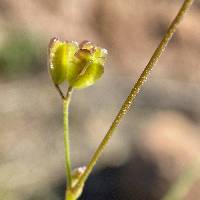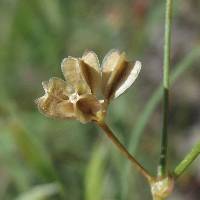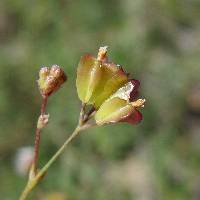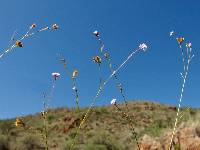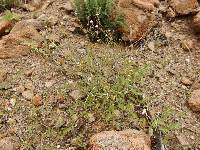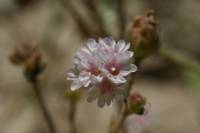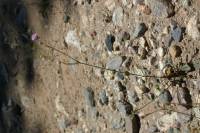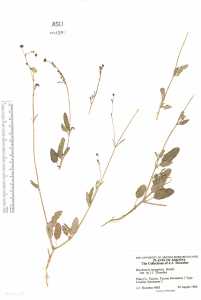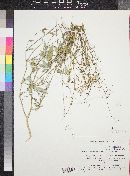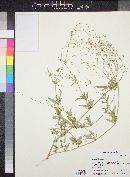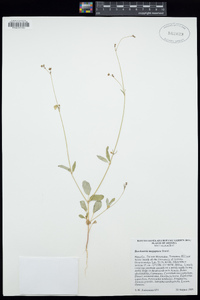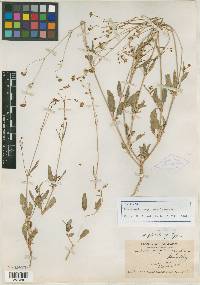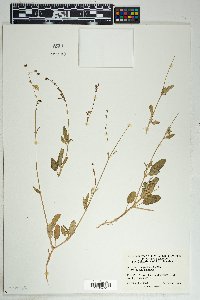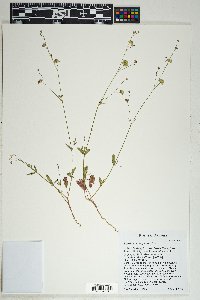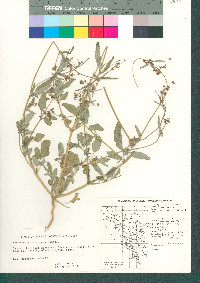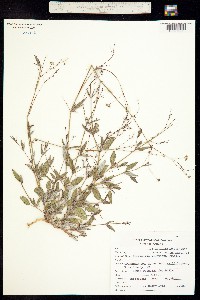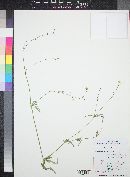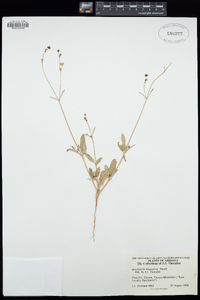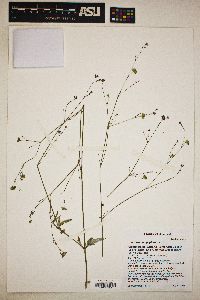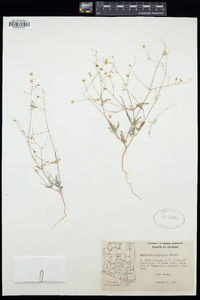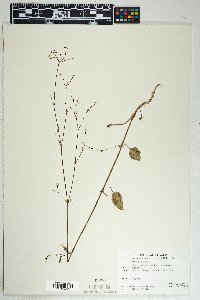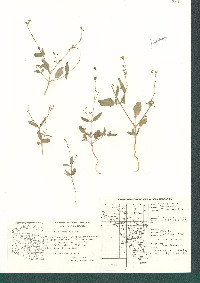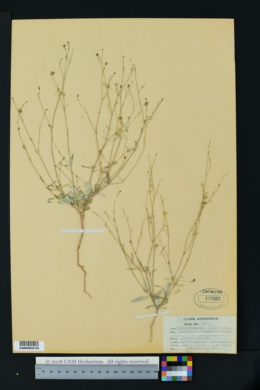
|
|
|
|
Family: Nyctaginaceae
Tucson Mountain Spiderling, more...spiderling, annual spiderling
|
Herbs, annual; taproot tapered, soft or ± woody. Stems usually erect or ascending, occasionally decumbent, branched several times, primarily distally, 3-6 dm, minutely puberulent with bent hairs and sometimes also glandular hairs in basal portions; sparsely to moderately puberulent distally. Leaves mostly in basal 1/2 of plant; larger leaves with petiole 12-17 mm, blade oblong-lanceolate, 25-50 × 10-17 mm (distal leaves smaller, sometimes longer, proportionately narrower), adaxial surface glabrous or very sparsely puberulent, often punctate, abaxial surface paler than adaxial, glabrous or very sparsely puberulent, usually punctate with small dark brown cells, base round, obtuse, or truncate, margins entire or slightly and irregularly crenulate, apex broadly to narrowly acute. Inflorescences terminal, forked ± unevenly ca. 3-4 times, with sticky internodal bands; branches strongly ascending, terminating in umbels (rarely flowers borne singly). Flowers: pedicel 1-2 mm; bracts at base of perianth quickly deciduous, 2, lanceolate, 0.6-1.5 mm; perianth whitish to pale pink, campanulate distal to constriction, 1-1.5 mm; stamens 3-4, barely exserted. Fruits (1-)3-14 per umbel, straw colored at maturity, broadly obconic, emarginate in profile (wings extended beyond apex of body), 3.2-3.8 × 2.2-2.6 mm (l/w: 1.3-1.5), glabrous; ribs 5, winglike, smooth; sulci 1-2 times as wide as base of ribs, smooth or very slightly rugose, not papillate. Flowering summer-fall. Rocky ground, among desert shrubs or trees; 700-1300 m; Ariz. Boerhavia megaptera is often sympatric with B. intermedia.
FNA 2004, Kearney and Peebles 1969 Duration: Annual Nativity: Native Lifeform: Forb/Herb General: Herbaceous annuals, to 60 cm tall, stems erect or ascending, occasionally decumbent, branched several times, primarily distally, herbage minutely puberulent with bent hairs and sometimes also glandular hairs in basal portions, sparsely to moderately puberulent distally. Leaves: Opposite, occurring in pairs or small bunches, oblong-lanceolate, 25-50 mm long and 10-17 mm wide, with broadly to narrowly acute apices and round, obtuse, or truncate bases, margins entire or slightly and irregularly crenulate, blades becoming smaller, sometimes longer and proportionately narrower distally, adaxial (upper) surfaces glabrous or very sparsely puberulent and often punctate, abaxial (lower) surfaces paler and glabrous or very sparsely puberulent, also usually punctate with small dark brown cells, the leaves mostly occurring in the lower half of the plant, (upper stems relatively naked). Flowers: Whitish to pale pink, flower-like perianths campanulate, sometimes distally constricted, 1-1.5 mm long with 3-4 barely exserted stamens and 2 lanceolate, subtending bracts to 1.5 mm long at the base, these quickly deciduous, inflorescences terminal and unevenly forked about 3-4 times, with sticky internodal bands, branches strongly ascending and terminating in umbels or rarely solitary, borne on petioles 12-17 mm long with 1-2 mm long pedicels. Fruits: Broadly obconic anthocarps 1-14 per umbel, straw colored at maturity, emarginate in profile with 5 smooth wings extended beyond the apex of the body, 3-4 mm long and 2-2.5 mm wide, with grooves 1-2 times as wide as the base of the wings, surfaces smooth o Ecology: Found on rocky soils among desert shrubs or trees, from 2,000-4,500 ft (762-1372 m); flowering summer-fall. Distribution: Arizona only. Notes: An anthocarp is a fruit with the achene or utricle enclosed in the persistent, fleshy, leathery, or woody base of the calyx. Look for this species in Pima county in Arizona. Ethnobotany: Specific uses for this species are unknown, but other species in the genus have uses. Etymology: Boerhavia, sometimes spelled Boerhaavia, is named after Hermann Boerhaave (1668-1738), a Dutch botanist; the meaning of megaptera is unknown. Synonyms: None Editor: LCrumbacher2012 |
|
|
|
This project was made possible in part by the Institute of Museum and Library Services [MG-70-19-0057-19].
Powered by Symbiota

